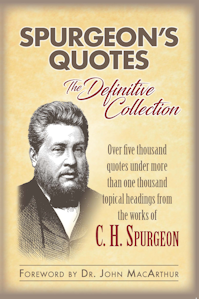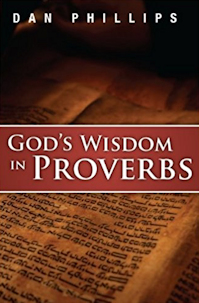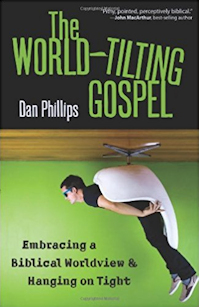Now to the part where I confess my weakness. Normally, when I review a commentary, I've already used some or many on that particular book. Not in this case. Song of Songs is a topic on which I'm not agnostic, but am unsettled. I could claim a position if you held a gun to a loved one's head, but once you eased off the trigger, I'd acknowledge others as having value, and admit indecision.
So I read this, my maiden voyage (if you'll pardon the minor pun) in the hopes that it would settle everything everything for me. Did it? Let's see.
Luter's tone is mature and reasonable throughout. He isn't in excited pursuit of any strange theory, and has no interest in bringing in readers with lurid discourses on erotic particulars. In fact if anything he's a bit (just a bit!) squeamish on the topic; that's all right, since others have clearly made up for that hesitance.
As to the topic of the Song, Luter says:
the overall movement of this ancient “love song” is from the early longings and expressions of affection of a young couple to their wedding day and night, then through the continuing growth of their relationship in the face of various problems that could easily derail their passionate love.
 As to the opening words, Luter grants the wording could mean it was composed for or in the honor of Solomon, but then reminds that the goal of exegesis is finding the most likely meaning, not just possible meanings — and "the most natural meaning of 1:1 is certainly that Solomon is the author of the Song of Songs."
As to the opening words, Luter grants the wording could mean it was composed for or in the honor of Solomon, but then reminds that the goal of exegesis is finding the most likely meaning, not just possible meanings — and "the most natural meaning of 1:1 is certainly that Solomon is the author of the Song of Songs."At this point, consideration of one of Solomon’s more widely accepted compositions, Prov 1–9, will be helpful in two respects: 1) the wisdom laid out there for his son to follow (e.g., 1:8; 2:1; 3:1) was clearly not followed by Solomon’s son Rehoboam, whose behavior in 1 Kgs 12:1–17 reflects anything but the wisdom of the Book of Proverbs, and which likely is at least partly attributable to Solomon’s parenting; and 2) his own recorded wisdom in regard to the exclusivity of marriage in Prov 5:15–20 was followed only partially. There is no evidence that Solomon ever went after prostitutes (5:20), though he apparently married virtually any and all women he desired, whether for pleasure (1 Kgs 11:2) or political advantage (e.g., 3:1; 11:3–8).
The key point here is that it was not necessary for a biblical author to be an exemplary figure with regard to the subject matter of the book in question. Under the dynamics of divine inspiration stated and implied in 2 Pet 1:21, the Holy Spirit sovereignly chose particular biblical authors and guided what was said. Relevant examples are Peter, who denied Christ three times, and Paul, who described himself as “a blasphemer, a persecutor, and an arrogant man” (1 Tim 1:13). In addition, the Spirit chose David, the author of many of the psalms, in spite of his adultery and blood-guiltiness (2 Sam 11–12; Pss 32, 51).
The Lord chooses whom He will—sometimes irrespective of what many contemporary readers would consider to be major lifestyle blind spots—to accomplish what He wills. It appears He did exactly that with the flaws of character and practice of Solomon in his authoring of the Song of Songs.
was intentionally crafted to portray God’s perspective on the romantic and sexual love between a man and woman. No other extended treatment of this subject, introduced as early in Scripture as the conclusion of the creation accounts (Gen 2:24–25) as a major aspect of man and woman coming together in marriage, is found elsewhere in the whole of Scripture. That is indeed a worthy purpose for the composition of the Song of Songs.
the overarching theological focus of the Song is love and desire that has these characteristics: it is headed toward marriage (1:2–3:5), it involves making a very public commitment and having a very private consummation (3:6–5:1), and it includes working through the “growing pains” of a marriage relationship—including “baggage” brought into the marriage and tensions which develop within the marital bond (5:2–8:14).
The theology of the Song of Songs sets forth a marriage-related love. Also, it is important to observe that the Song does so while honestly depicting the full bloom of youthful infatuation (Song 1–2), against the dark backdrop of the selfishness (5:2–4) and disappointment (5:5–8) of “real life,” life worked out against the shadowy unavoidable prospect of death (8:6)—in other words, love in a fallen world!
At this point, a careful consideration of Song 6:8–9 serves to reinforce and expand that general point. There, the contrast that is drawn between “the one” (the Shulammite) and the women (queens/concubines/young women) “without number”111 may well have affinities to another part of Gen 1–3. If Genesis 2:24–25 is almost certainly antecedent “marriage theology” for the Song of Songs, what about the immediately preceding verses: Gen 2:18–23? Is it stretching things to hear an echo of Adam going through the process of moving from his aloneness (2:18) to being introduced to his exact counterpart (2:21–23), against the backdrop of the differentiation that came from naming all the animals (2:19–20), in Solomon proclaiming the Shulammite—whom he may have given the name of his exact counterpart (Song 7:1) for the purpose of the Song—as “the one” (6:9) against the backdrop of women “without number” (6:8)? If nothing else, in both cases Adam and Solomon went through a process to come to their points of insight and appreciation for the counterparts Yahweh provided them.
Solomon and Shulamith, likely the male and female versions of the same name, may echo “man” and “woman” in Gen 2:23 as being perhaps as close to the ideal human couple that there have been since the fall in the poetic depiction of the Song of Songs.
It remains lexically unclear whether the ending of שַׁלְהֶ֥בֶתְיָֽה (i.e., -yah) should be understood as an intensive (“most powerful flame”) or as “a superlative formed with the divine name” (“flame of Yah” [Estes, 407]).
This is how the Song of Songs ends: from 8:6–7 forward, the closing section paints a picture of silence where commitment needed to be by the man (8:6–7). This created an emotional and spiritual vacuum that was filled by the growing perception of domination (8:11–12) and distanced disenchantment (8:10, 13) on the part of the woman. In spite of all this, the desire for each other they both had exhibited through the book continued to the end (8:14).
There it is: a struggle of domination and desire. In the end, the picture of the tension between wives and husbands portrayed in Gen 3:16 goes on, because the ongoing theological reality is that their mutual love must be played out in a fallen world.
AFTERWORD: I accidentally mis-typed the title at one point as "Song of Snogs." British readers would have had a merry time over that.















3 comments:
Dan, how would Luter suggest a preacher point to Christ from this book of the Bible?
Alex, Spurgeon's book "The most holy place" contains the majority of the no less than 63 sermons he preached from the Song.
The book is fairly hard to find in print form but can be accessed in Logos or all of the sermons at Spurgeongems.org.
Reading them is a rich spiritual feast that I would highly recommend.
Boyd was a professor of mine in 1991 at the Talbot School of Theology. He taught a class on Daniel and Revelation, with a focus to preaching those books with present, not simply future, application. He always struck me as a man who believes that the Word of God changes us today in very powerful ways.
Post a Comment